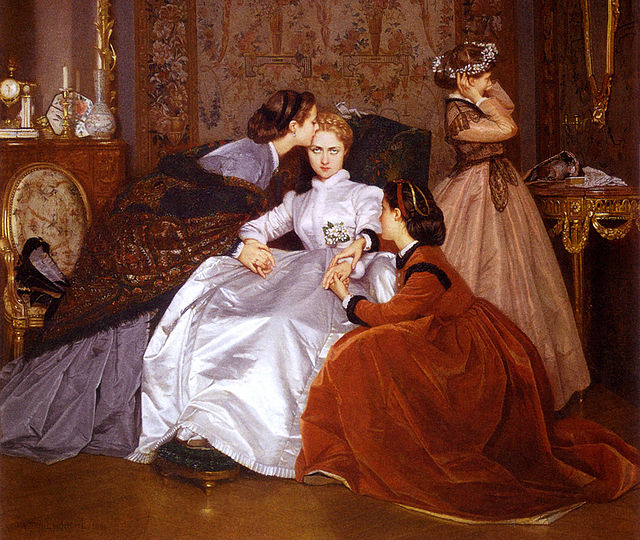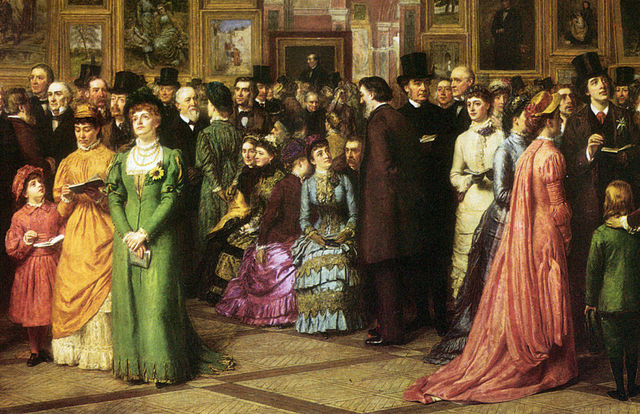1860s fashion in European and European-influenced countries is characterized by extremely full-skirted women's fashions relying on crinolines and hoops and the emergence of "alternative fashions" under the influence of the Artistic Dress movement.
Fashions of the 1860s include square paisley shawls folded on the diagonal and full skirts held out by crinolines. Auguste Toulmouche's Reluctant Bride of 1866 wears white satin, and her friend tries on her bridal wreath of orange blossoms.
A blue silk wedding dress from c. 1860.
Croquet players of 1864 loop their skirts up from floor-length over hooped petticoats. Small hats with ribbon streamers were very popular for young women in the mid-1860s.
A cotton dress from c. 1865.
Artistic Dress was a fashion movement in the second half of the nineteenth century that rejected highly structured and heavily trimmed Victorian trends in favour of beautiful materials and simplicity of design. It arguably developed in Britain in the early 1850s, influenced by artistic circles such as the Pre-Raphaelites, and Dress Reform movements. It subsequently developed into more specific categories such as Aesthetic Dress and Künstlerkleid on the continent.
William Powell Frith's satiric painting of 1883 contrasts women's Aesthetic dress (left and right) with fashionable attire (center) at a private view. Detail of A Private View at the Royal Academy, 1881.
Jane Morris (The Blue Silk Dress) by Dante Gabriel Rossetti, 1868.
Ball gown designed by Jacques Doucet, 1898–1900, with characteristics of the aesthetic dress movement : simple in design, "yet extravagant by the choice of materials used. The sheer overlayer is enhanced by the solid lamé underlayers and a sense of luxury is added by the hidden lace flounce at the hem."
Oscar Wilde in his aesthetic lecturing costume, 1882. Photo by Napoleon Sarony. Wilde wrote about aesthetic dress movement in his recently rediscovered treatise The Philosophy of Dress.








